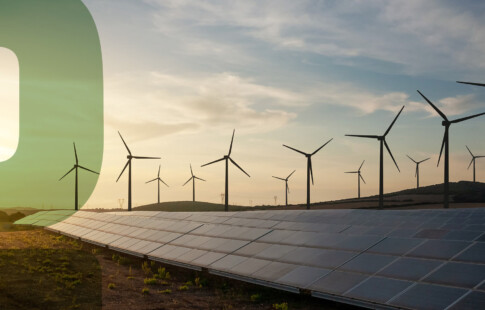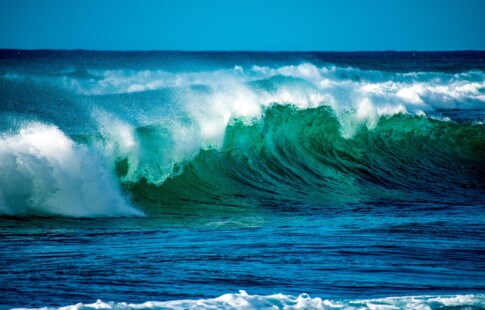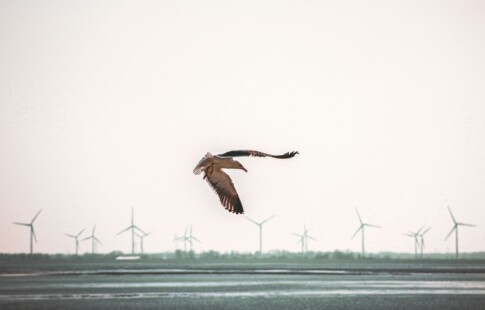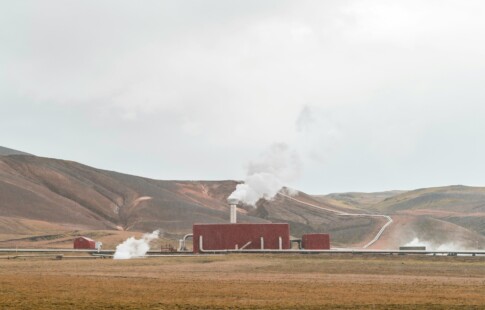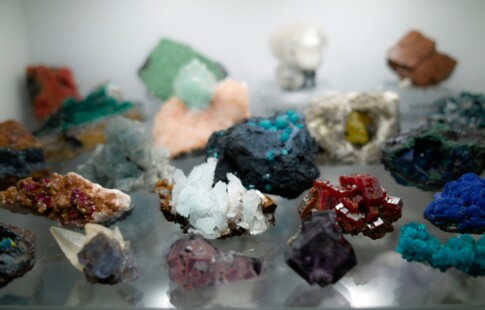
Hydroelectric vs. Wind Power: What Offshore Energy Should We Invest In?
We are reader-supported. When you buy through links on our site, we may earn affiliate commission.
Hydroelectric vs. Wind Power: Current Statistics
Hydroelectric power stats
- 79,000 megawatts of power in the U.S. (7% of total capacity)
- 22,000 megawatts of pumped storage capacity in the U.S.
Offshore wind power stats
- 82,000 megawatts of power in the U.S. (4% of total capacity)
- 28 projects with total of 23,735 megawatts of capacity in planning and development
Hydroelectric power was the largest source of renewable energy, but recent rapid growth in wind power capacity took away that title. Wind surpassed hydro regarding capacity in 2016, and the U.S. Energy Information Administration recently predicted that it would also overtake it in an actual generation this year.
Offshore wind, meanwhile, is just getting started in the U.S. As of now, Europe has much more offshore wind but, according to the U.S. Department of Energy, the United States has a technical resource potential of around 2,000 gigawatts per year for offshore wind.
Interest in building new dams may be waning, but hydro has offshore potential too in the form of largely unexplored tidal and wave power. Plus, dams continue to be a vital, reliable energy resource.
So, hydroelectric vs. wind power: which makes a better renewable power source? Let’s explore.
Hydroelectric Power
Hydroelectric Dams
The U.S. has around 79,000 megawatts of conventional hydroelectric power, about seven percent of the country’s total capacity. Many of these hydroelectric dams are among the oldest hydroelectricity generators in the nation. The U.S. likely won’t build any large dams shortly but may add capacity to existing ones and build some smaller ones.
Conventional hydroelectric power is beneficial because it provides a reliable, clean energy source. It’s considerably less variable than wind turbines, generation from which varies from day to day depending on wind speeds. Dams can dry up during times of drought but are generally reliable. They can also run for many years with low operational costs.
However, locations fit for building dams are limited. They also have substantial environmental impacts that wind power doesn’t. They alter the aquatic environments they depend on, and creating reservoirs requires flooding habitats where animals, and even people, lived. Dams can also lower the surrounding water table and even dry up smaller downstream rivers in some cases.
Pumped Storage
There are approximately 22,000 megawatts of hydroelectric pumped storage capacity in the U.S., according to the Department of Energy. These facilities store energy by keeping water in an upper reservoir. When energy demand is high, and the grid needs the extra power, facility operators can release the water to a lower reservoir, generating electricity. Then, when electricity costs are low, typically at night, the facility pumps the water back up to the top reservoir.
These storage facilities serve important functions for the electric grid. They can respond quickly to changes in demand and supply and provide grid stabilization services. In this way, pumped storage can complement variable resources such as wind well.
Because it’s a storage technology, pumped storage can only make up so much of the electricity we use. In fact, the facilities use more power than they produce. However, they are often more than 80 percent efficient and make the grid balancing capabilities they provide worth the cost.
The energy that pumped storage facilities produce doesn’t release any emissions. The electricity used to pump the water to the upper reservoir might, depending on how it’s generated, leading to possible indirect emissions.
Tidal and Wave Power
There’s another way we could potentially generate power from water, and we can do it with inland rivers as well as ocean waters. Numerous technologies that harness the power of tides, waves and currents are currently undergoing research and development.
These technologies, sometimes called marine or hydrokinetic technologies, aren’t widely used commercially yet, but based on current project proposals, we could be generating 13,000 MW of electricity from the power of moving water by 2025.These resources have the obvious benefits of being clean and renewable. Unlike with conventional hydroelectric, there’s vast untapped potential when it comes to hydrokinetic energy. Initial research suggests that environmental disturbance caused by these facilities would be minimal.
Currently, various projects are underway to advance these new technologies, reduce their costs and speed up the timeframe for getting them on the market.
Offshore Wind Power
The U.S. now has around 82,000 megawatts of wind capacity, according to the Department of Energy. Included in that number is a small amount of offshore wind. However, Europe already has over 12,600 gigawatts of offshore installed wind capacity. The first U.S. offshore wind facility began providing power in December 2016.Despite its slow start, the U.S. offshore wind market seems to be heating up. Twenty-eight projects with a total of 23,735 megawatts of capacity are now in various stages of planning and development. As mentioned earlier, offshore wind has a technical resource potential of around 2,000 gigawatts, or 2,000,000 megawatts, per year in the United States.
Offshore wind has many of the same advantages that onshore wind does, with the addition of a few that are unique to it. Offshore wind farms produce clean, renewable energy like onshore ones, but have the advantage of the faster, steadier winds that occur offshore. They may be able to provide substantially more electricity since a wind turbine can generate twice as much in 15 mile-per-hour wind than in 12 mph wind.
Building such large structures offshore, as well as the infrastructure to transport electricity back to land, is a challenge. The turbines must withstand wave action and heavy storms. Building turbines in deeper water is more challenging than in shallower water but has several benefits.
Turbines seen from the coastline are often unpopular with coastal communities and may also hurt local tourism activity and property values. Wind facilities close to shore could get in the way of recreational and other commercial activities.
New floating turbine technologies are now making it more feasible to build wind facilities in deeper waters, which could increase the amount of potential we can take advantage of.
Wind Energy vs. Hydro Energy: Which Is Best?
All of these energy technologies have their benefits and their challenges. Conventional hydroelectric capacity is not likely to increase in the coming years, and expanding it would have a substantial negative environmental impact. However, it will remain a significant energy resource, and we will continue to enhance the facilities we already have.
Pumped storage may see some increased capacity in the coming years, but its potential for growth is limited since it is a storage technology. However, it could serve a crucial role in the future by serving as a backup for variable energy sources, such as wind.
Tidal and wave energy have a lot of potential. But the technology is so new that we won’t see it being used much for energy production.
Offshore wind, as well as onshore wind, is growing faster than any hydroelectric and hydrokinetic resources. Increasing its capacity has its challenges, but it’s one of the most environmentally and economically beneficial resource potentials we have.
Necessary Changes in the Debate of Hydroelectric vs. Wind Power
The fact remains, though, that we are still heavily dependent on natural gas and other fossil fuels, which release greenhouse gas emissions that contribute to climate change. If we transition to a green energy economy, we likely won’t be able to rule out any renewable energy source. This includes hydropower and wind power, at least not until technology improves further and regulations and markets adapt to these changes.
Who do you think has the upper hand in the battle of hydroelectric vs. wind power?
Share on
Like what you read? Join other Environment.co readers!
Get the latest updates on our planet by subscribing to the Environment.co newsletter!
About the author

Jane Marsh
Starting from an early age, Jane Marsh loved all animals and became a budding environmentalist. Now, Jane works as the Editor-in-Chief of Environment.co where she covers topics related to climate policy, renewable energy, the food industry, and more.

